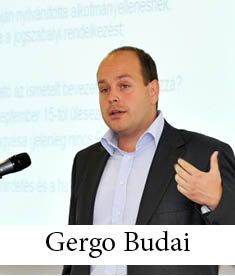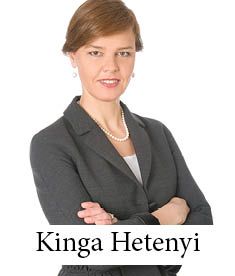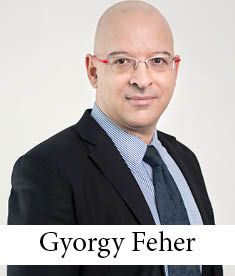The Belarus energy sector is seen by many investors, both domestic and foreign, as a market niche with high potential. The nation of almost 10 million people was arguably the most industrialized region of the former Soviet Union, and the government of independent Belarus deserves some credit for preserving and developing those industrial assets. This is one of the main reasons why today Belarus has a well-developed electric power system, with a total capacity exceeding 9,200 MW, grid length of over 240,000 km, and over 63,000 industry employees.
To date, the energy sector has remained an almost 100-percent state monopoly. Transmission and distribution of energy are completely controlled by the state entity Belenergo and its regional branches. So far, it is only in generation where the government allows for private investment. This system on one hand guarantees acceptable power tariffs for end customers (especially households, where over 60% of power tariffs are subsidized by the government) and a stable power supply in rural and other less-populated areas. On the other hand, the model kills competition and makes the sector less attractive in the eyes of the foreign investors.
The Belarusian Government did follow and analyze energy sector reforms in other countries of the region, and several reform concepts were elaborated in the early 2000’s. However, none of them was implemented in real life. None of the current sector development strategies adopted by the government nor any of its public statements implies abandonment of the state monopoly in grid operation and power distribution. On the other hand, private investment is welcomed in generation, especially renewable energy.
Belarus seeks to obtain greater independence in the area of electric power supplies. By 2019, the Ostrovets nuclear power plant (initially, two blocs with 1082 MW net output each) should be put in operation. For about a decade, special emphasis has been put on renewable energy resources and local fuels for the power plants. Belarus is trying to make use of its numerous rivers, and a state program to develop hydroelectric power plants is being implemented, the largest project thus far being the Grodno power station (output 17 MW, operating since September 2012). Other good examples of foreign involvement in the Belarus energy sector are wood chips-fueled CHPs in Pruzhany, Zhlobin, and Shklov, constructed by Finland’s MW Power in 2007 – 2009, several landfill gas facilities constructed and operated by Sweden’s Vireo Energy AB in Eastern Belarus, and a waste-fueled power plant in Brest constructed by Austria’s Strabag.
Market participants, however, seem to be pessimistic about the near future of renewable energy in Belarus, sensing opposition from the state monopoly Belenergy. This opposition has resulted in some adverse steps, such as recent reduction of the feed-in coefficients for hydroelectric power plants 1.3 to 1.1, and solar energy power plants 3 to 2.7. Obviously, the government to a great extent is driven by short-term financial limitations (currently, it is easy to argue that renewable energy appears to be much more expensive than that generated from traditional sources, especially Russian gas), possibly to the detriment of potential strategic gains.
Another factor which is holding back foreign investment in the sector is the immaturity and instability of the legal framework, which makes long-term projects riskier in the eyes of potential investors. A peculiarity of the legal system in Belarus is that decrees issued by the President have superior legal power to laws passed by the Parliament. These decrees may be dedicated to specific investment projects (for instance, granting special exemptions and privileges or establishing key objectives), or regulate a whole industry or important area of relations between state and business, such as privatization, employment, and stock market operations. They may even sometimes have retroactive effect and thus present unpleasant surprises to both foreign and local businesses. The good news here is that the number of Presidential decrees issued each year is decreasing (e. g., only 6 in 2014 versus 14 in 2004, versus 41 in 1999), and their purpose is often to deregulate business relations. This is in line with a general trend towards increasing the competitiveness of Belarus as an investment destination and further stabilizing the legal system; the quality of the laws has also increased notably during the past decade.
Many investors seek remedy against risks in making an investment agreement with the Republic of Belarus, attempting to receive additional tax and customs privileges, guarantees of fair trial (international arbitration), and protection against nationalization and requisitioning of their investments. In practice, the majority of such agreements merely repeat provisions of investment laws, and thus far none of them has been tested in courts. Inclusion of any extra investment incentives requires approval by the President. At the same time, the state seldom hesitates to resort to penalties established by the agreement or even avoid the agreement in case of breaches by the investor. According to the latest 2015 statistics, there are now 1,182 registered investment agreements, with a total investment volume exceeding USD 22 billion; 331 projects have been implemented successfully. In addition, a total of 555 investment agreements have been terminated for various reasons. No separate figures for the energy sector are published, but in any event the statistics quoted above show that quite often an investment agreement is hard to make use of. Also, some investors in the energy sector complain that they have to hire at least one dedicated employee just to file all the reports related to the implementation of the investment agreement throughout each financial year.
In the light of the foregoing, a summary of recommendations to an investor considering a venture in the Belarus’ energy sector could be as follows: (1) Do a thorough market reconnaissance via existing project owners, local advisors, embassies, the National Agency for Investment and Privatization, etc. (2) To the extent possible, approach top-level authorities with your proposals – the Ministry of Energy, a Vice Prime Minister in charge of the energy sector, Presidential Administration, or at least a local executive committee (Minsk / regional government). At lower levels, you may face a lack of authority and procrastination in decision-making. (3) By all means make an investment agreement with the Republic of Belarus, but do not consider it to provide be a carte blanche or panacea against all risks. (4) Consider a reliable local partner, but be prepared for a lower quality of local management. (5) Do not fully rely on your experience in seemingly very similar markets (Russia, Ukraine, Lithuania, etc). In many ways, things are regulated and done in practice differently here. Recognize the difference.
By Maksim Salahub, Partner, Sorainen
This Article was originally published in Issue 2.1. of the CEE Legal Matters Magazine. If you would like to receive a hard copy of the magazine, you can subscribe here.




